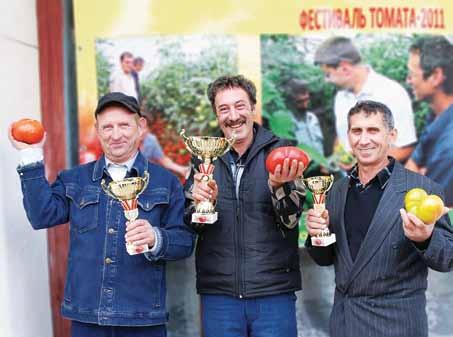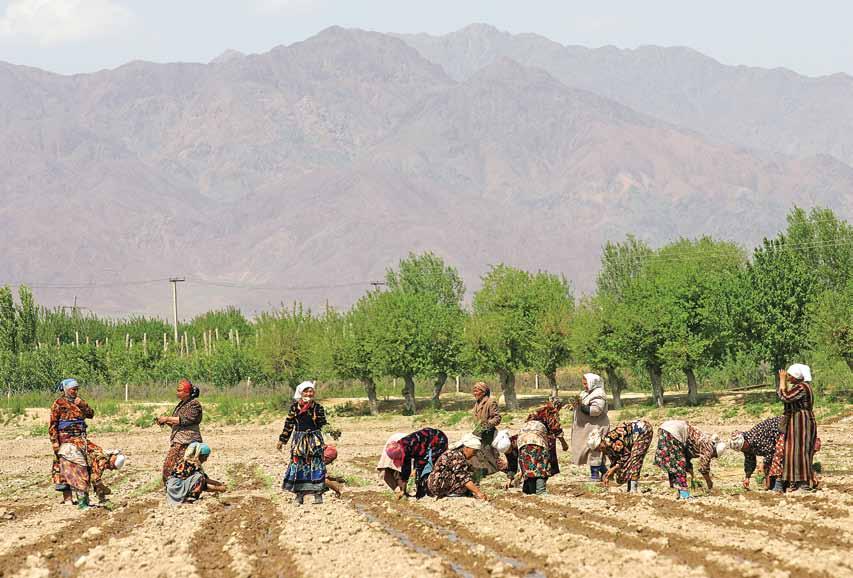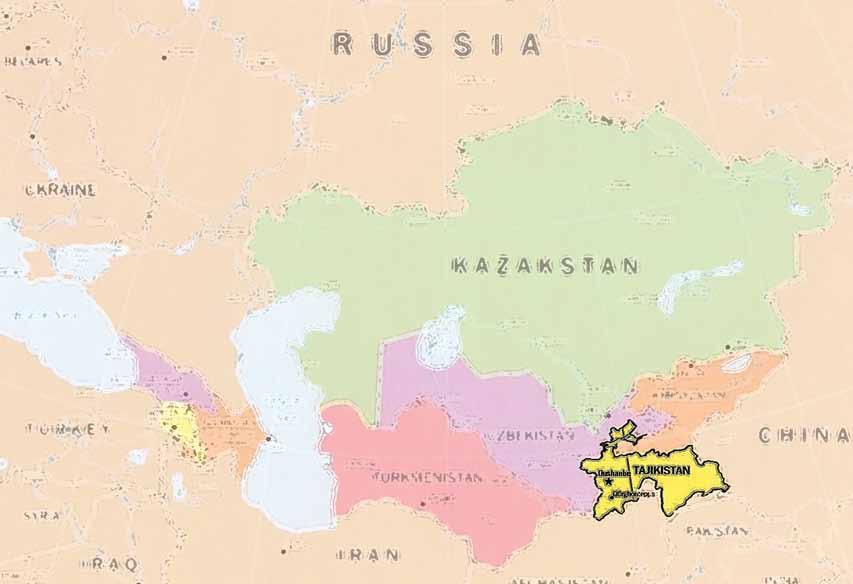
6 minute read
News
Ukraine farm project beats 5,000 target
A MEDA project to help Ukraine farmers boost production and income has surpassed its target of enlisting 5,000 farmers.
The Ukraine Horticultural Development Project (UHDP) educates farmers in modern cultivation practices to grow berries, vegetables, table grapes and medicinal herbs. It aims to improve their standards of living through innovative technology, increased cooperation and market linkages.
“The social aspect is also quite important, such as helping poor and socially vulnerable individuals so they may find profitable work in their own village,” says project director Stephen Wright.
Farmers in the Crimea and Zaporozhye regions now are growing more diverse crops, utilizing better technology such as greenhouses and irrigation, and gaining synergies from marketing together.
The project selects “lead farmers” known for skill and entrepreneurship and provides special training which they pass on to others in their village clusters.
Through these efforts farmers in the project last year consolidated and sold more than 3,000 tons of produce, says Oleg Osaulyuk, UHDP deputy manager. “The project expanded its computer-based marketing information system, which ensured effective sales monitoring, analysis and ac-
Farmers hoist trophies for winning the biggest tomato contest at the 2011 Tomato Festival. “It’s great to see how proud they are to show off what they had grown,” says project director Stephen Wright. “This is the first time in their lives someone has shown appreciation for their work.”
curate decision making.” Lead farmer Diogen Karelov says cold-storage technology facilitated by UHDP has been a big help. “There was a period this year when the prices for cucumbers fell sharply,” he says. “We decided not to sell at this price, and instead moved all the produce into cold storage. After five days the price more than tripled, and a buyer emerged who was extremely pleased with our refrigerated produce.” Centralized trade venues brought wholesale buyers
and farmers together. Lead farmer Mikhail Dzhorkashvili says that in his village more than 40 members were actively engaged in the consolidation efforts, “and their number is constantly on the rise. People see a promising future and want to band together to ensure mutual success.”
Another lead farmer, Reshat Bilyalov, credits UHDP for showing farmers how to “work in a completely new way. In the past, we would never tell our neighbors what crop varieties we were planning to plant. But now we have come to the realization that consolidation is the way to go — more produce means more buyers. We are also now aware that we have to help each other. There is a clear understanding that if I do well, and so does my neighbor, then a large-scale buyer will arrive and offer higher prices. He will know that we offer a good product and an honest deal and so he’ll be back. The project has changed our way of thinking, which is very important. Otherwise, everyone would be so secretive, never letting neighbors into his yard. We used to be competitors, but now we are partners.” Last fall the project organized Ukraine’s first tomato festival to showcase clients’ production, including a contest for growing the biggest tomato. Major distributors, such as the country’s largest supermarket chain, were introduced to the region’s tomatoes and other greenhouse produce.
A web-based weather service was introduced so farmers can easily access weather forecasts and data about potential plant diseases. “This is crucial for us,” says lead farmer Vera Morozova. “When you bus in a team of workers from the city and take them to the fields to harvest crops, but then it starts raining in half an hour, you have to stop the work but still pay for the bus and the labor. It’s the same with the watering. If we see that we are going to have some rain in the next few days, we can reduce our watering so the plants don’t get oversaturated.”
The five-year $10 million project is supported by the Canadian International Development Agency (CIDA). ◆
“Hidden hunger” of the poor: new target for development
Nutrition is getting new attention in the development industry.
At one time, ending hunger was seen as a matter of helping poor countries grow more crops. That changed with the Ethiopian famine of 1984 where starvation occurred despite the availability of food. People started listening to Indian economist Amartya Sen, who pinpointed the real problem as individual access rather than overall supply. Aid agencies concentrated on reducing poverty and making markets more efficient, producing a dramatic one-third reduction in the number of people living on less than $1 a day.
Now “hidden hunger” is increasingly seen as a matter of nutritional deficiency, not only food supply. Having enough to eat does not translate automatically into good health if
Feeding a multitude with wonky veggies
Last time you shopped for produce, did you select the oddshaped potato, or the bruised apple that a previous customer may have accidentally bounced off the floor?
Those orphans of the food chain could feed a lot of people, but how to get them into the shopping cart?
A public event in London’s Trafalgar Square drew attention to the issue when it offered a free lunch of curry made from wasted food.
Organized by a “Feeding the 5,000” team of organizations to encourage households and businesses to reduce food waste, the meal was composed entirely of ingredients that otherwise would have been discarded, such as cosmetically imperfect fresh fruit and vegetables, like wonky carrots. The misshapen ingredients were supplied by farmers who sell their goods to stores.
“The supermarkets have strict cosmetic standards, so if a carrot is too long or slightly bent, it either goes in the bin or is left out in the field and simply ploughed back into the ground,” said food waste expert Tristram Stuart in a Guardian article..
He hoped the event would inspire people to stop wasting food and end the practice of dismissing unsightly goods.
Experts say many countries discard up to 40 percent of their food, putting unneeded pressure on the environment and global food supplies.
Who is to blame? Exacting market standards, or fussy shoppers who want their food to look as good as it tastes?
Businesses may not be the real culprit, says a Canadian vegetable producer whose company discards an estimated 100,000 pounds of produce every year and feeds some culls to cattle.
“If people would go into the store and buy the ugliest potatoes and apples, we wouldn’t have this problem,” he says. “Everyone picks the nicest-looking fruit.” ◆ children lack adequate micronutrients. The ripple effects are significant, as malnourished children are less likely to go to school and perform poorly even if they do. Later on, says The Economist, “they earn less than their better-fed peers over their lifetimes ... and die earlier.”
The magazine says new attention to micro-nutrient deficiencies has a great payback rate. “The good news is that better nutrition can be a stunningly good investment.... Nothing else in development policy has such high returns on investment.”
For its part, MEDA’s new Ghana project is helping 20,000 women to bolster nutrition and family food security by growing soybeans. ◆







